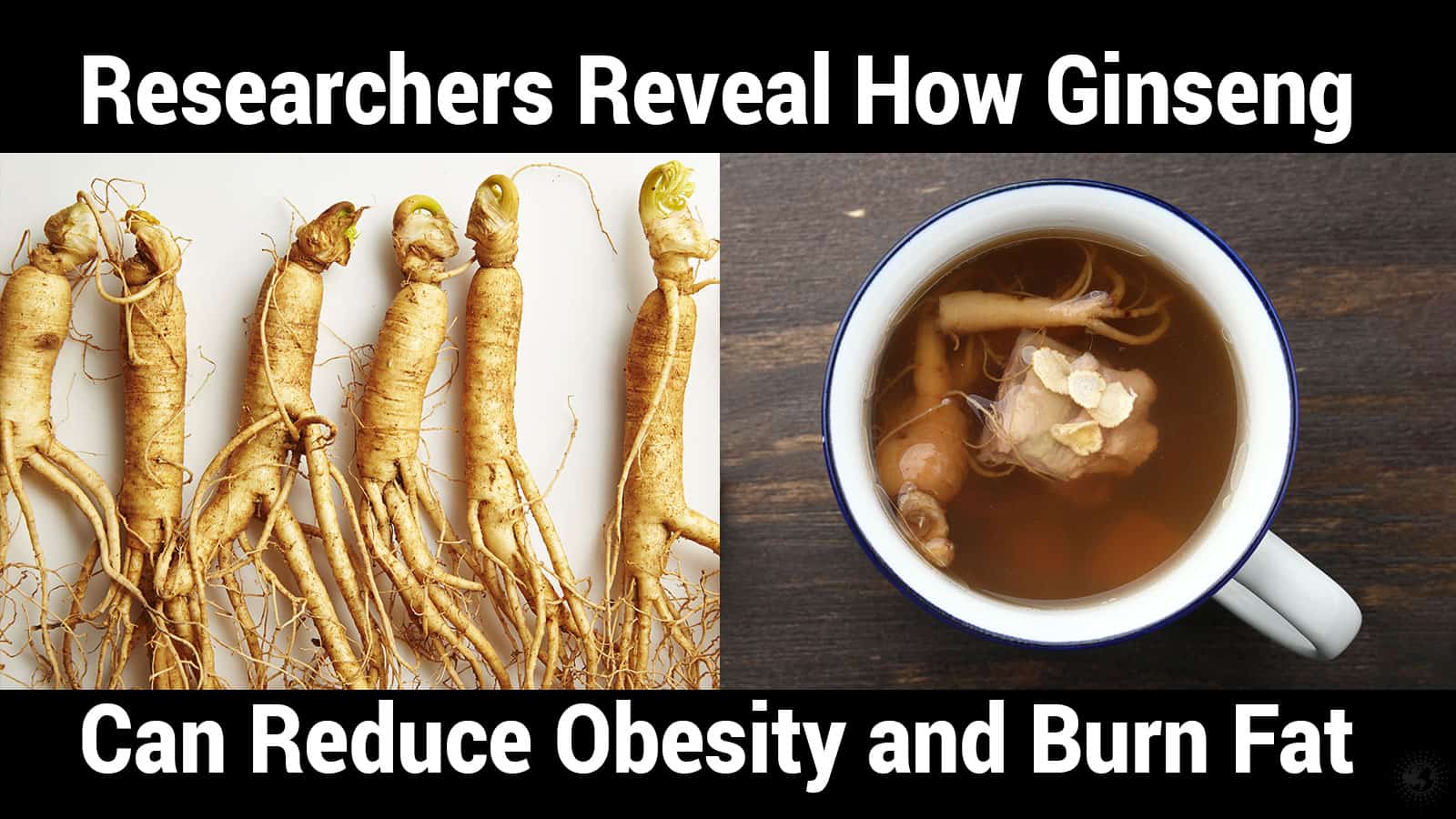It’s time to talk about that dreaded “F” word. No, not that “F” word! The other one: Fat. With the holidays, we all put on some extra pounds, mostly related to excess calories that we don’t burn off until afterward if we are diligent. Fat cells can consist of 3 different types, and we store fat in 3 different ways. It turns out, one kind of fat cell is both a blessing and a curse. It is the fat on our body that can help you burn off the other two. Sadly, we don’t generally have a lot of that fat, so we need a little help. Ginseng may be that help. Researchers reveal how ginseng can reduce obesity and burn fat.
Fat cells and storage on our body
Our body stores three different fat cells in 3 different ways. We have white, beige, and brown fat cells. The actual name for fat cells is adipocytes, and they serve several crucial functions for our body.
- They produce and release necessary hormones
- They protect our nerve endings
- Bind to proteins to act as messengers
- Store vitamins and minerals
- Keep us warm and maintain body temperature
- Provide stored energy
Subcutaneous Fat
Subcutaneous fat is the fat we are used to talking about and that we pay the most attention to. It’s the most visible fat that women see on our thighs, butt, and stomach. Men usually accumulate it on their belly. It makes up about 90% of the fat on our bodies. It forms over our muscles under our skin. That’s why it so easy to pinch. It can consist of white or beige fat cells.
For women who spent most of their life with thick thighs and wide hips but slimmer waists, the fat they accumulated was doing less harm than those who tended to carry their fat around their waist. Sadly, thanks to menopause, the perk of being pear-shaped begin to change, and all women start to gain weight around their waist.
Scientists have stated that belly fat is one of the contributing factors toward heart disease or stroke. Waist measurement higher than 35″ for women or men with a waist higher than 40″ are at increased risk of heart disease.
As much as we dislike our white fat, it does serve a purpose. Well, two to be exact.
- Stores energy to use when we need it
- Produces hormones and sends them into the bloodstream
When our white fat cells are still small, a hormone called adiponectin is created, which is an anti-inflammatory, and it aids in controlling our blood sugar. It makes our muscles and liver sensitive to insulin, which then decreases our chances of developing diabetes or heart disease.
However, when we gain too much white fat, those cells become bigger, and our opportunities begin to increase for heart disease and diabetes because the production of adiponectin slows. This is why doctors agree that too much subcutaneous fat, especially around the waist, is detrimental to our health. It also creates a hormone called leptin, which signals to our brain when we are full.
Visceral Fat
Visceral fat is the most dangerous fat, primarily due to its location. It consists of white fat cells and forms deep in the cavity of our abdomen, around our organs. We can’t see it nor touch it. Visceral fat can only be seen with a CT scan. Doctors generally tell people that if you have belly fat, then you also have visceral fat. Estimating the amount of visceral fat you have may be difficult. The general rule is that if you have a BMI of 25 or more, than you have visceral fat.
Visceral fat is a factor in:
- Cholesterol levels
- High blood pressure
- Diabetes
- Potentially dementia
- Heart disease and stroke
Essential Fat
Essential fat is the necessary fat for our bone marrow, fat around our eyes, our nerve endings, and around the membranes of our organs. It doesn’t produce much energy or adds to our bulk.
What about those brown fat cells?
Brown fat cells are the fat cells which kick in when you get cold. They are part of the reason some say that you can burn more calories sleeping in a cold room.
It stores in locations like the neck, shoulders, and chest. As children, we have more brown fat cells than we do as adults. Leaner individuals tend to have more of it than overweight or obese people. Yet, the amount is still minimal in comparison to white fat, no matter your size. Let’s say you have 20 pounds of white fat on you, maybe 2 oz of that is brown fat, for example.
The exciting factor about brown fat is that is can burn off white fat.
This, of course, has many scientists interested in how we can learn to use that to decrease obesity and improve our health. It is believed that it contains more mitochondria that use white fat as fuel.
A study performed at the University of Munich, also demonstrated that it might be possible that food can trigger this same thermogenic process in brown fat. The act of eating and digesting already uses up 10% of energy through muscle contractions of the intestines, secretion, and the process of digestion. Volunteers ate a high carbohydrate meal, and the scientists measured the level of activity in the brown fat cells. This confirms that somehow brown fat cells play a role in our digestion of food and possibly our sensation of fullness after eating.
The study published showed how it may be possible to trigger the activation of brown fat cells and convert beige fat cells into brown fat cells through the use of ginseng.
Ginseng and burning fat to reduce obesity
Ginseng is an herb that is most commonly recognized by two types, Asian ginseng or American ginseng. Two of its chemicals have been identified as potentially contributing to various health conditions or improvements. They are ginsenosides and gintonin. The reported health benefits consist of:
- An antioxidant that can reduce inflammation
- Help the brain’s memory
- Improve mood and behavior
- Aid in erectile dysfunction through the production of nitric oxide
- Strengthen the immune system
- Help in combating fatigue and improving energy levels.
Now, we may be able to add a fat burner to that list. A recent study published in BMJ has potentially found a correlation between the benefits of ginseng and increasing brown fat cells and their thermogenic performance. This study was performed by a team of Chinese scientists associated with the Chinese Academy of Sciences.
The scientists chose to attempt to determine the source of the weight control benefits believed to occur with the use of ginseng by targeting gut bacteria. They would then aim to identify the corresponding long-chain fatty acids which appear to be related to ginseng’s weight management potential.
Scientists injected mice with ginseng extract and then tested for gut bacteria reaction. They were able to see that the gut bacteria Enterococcus faecalis then produced a long-chain fatty acid called myristoleic acid. Together, the bacteria and the acid reduced white fat cells through activating the brown fat cells and beige fat cells converted to brown fat cells. The results prove that it is the relationship between gut bacteria and long-chain fatty acids, which could play an instrumental role in developing a medication for obesity through brown fat cells.

Final Thoughts on Using Ginseng to Reduce Obesity
For many people, excess fat is of great concern in regards to overall health. Excess weight from fat links to high blood pressure, heart disease, high cholesterol, diabetes, and potentially dementia. While age, hormones, and genetics can play a significant factor in how our weight and fat is distributed, our choices play a vital role as well. Learning the methods of dieting and exercise to keep that ratio in proportion, especially in relation to waist size, is a significant part of limiting that fat gain.
A percentage of fat gain, particularly around the waist, is of grave concern medically. Scientists have been seeking a way to make getting rid of it more manageable. Medication cannot take the place of diet and exercise, but helping our bodies to maintain themselves is a good step. Researchers revealing that ginseng can burn fat and reduce obesity by getting brown fat cells to activate more often is a great step.














 Community
Community

